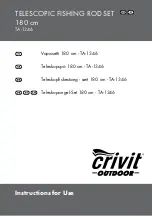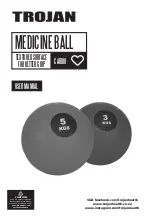
38
EMER-FLEX
Gear Coupling Compatible Type
Hub G Face Distance
Parallel Misalignment
Angular Misalignment
Model No.
Angular Misalignment
Parallel
Misalignment
ε
(
mm
)
Hub Face
Distance Misalignment
E
(
mm
)
θ°
(
de
g
)
Dial Reading
T.I.R.mm
NEF45G
0.5
°
1.05
0.20
61.4
±
0.50
NEF80G
0.5
°
1.20
0.23
68.4
±
0.50
NEF130G
0.5
°
1.45
0.25
78.6
±
0.50
NEF210G
0.5
°
1.65
0.30
88.0
±
0.50
NEF340G
0.5
°
1.85
0.30
97.2
±
0.50
NEF540G
0.5
°
2.15
0.38
112.8
±
0.50
NEF700G
0.5
°
2.40
0.45
136.4
±
0.50
NE
H
09G
0.35
°
1.68
0.25
109.0
±
0.50
NE
H
14G
0.25
°
1.20
0.18
107.0
±
0.50
NE
H
20G
0.25
°
1.35
0.20
121.6
±
0.50
NE
H
30G
0.25
°
1.50
0.23
128.0
±
0.50
NE
H
41G
0.25
°
1.63
0.25
143.0
±
0.50
Table 3 Recommended Centering Value (Gear Coupling Compatible Type)
E
NEH14W
-180W
NEH09W
NEF02W-NEF700W
NEH14W
-180W
NEH09W
NEF02W
- NEF700W
Relationship between Parallel Misalignment and Angular Misalignment for the Spacer Type Coupling
Allowable Centering Value
Allowable Angular Misalignment
Allowable Angular Misalignment
Parallel
Misalignment
(Eccentricity
per
Unit
Length
of
Disk
Center
Distance
(L))
Parallel
Misalignment
(Eccentricity
per
unit
Length
of
Disk
Center
Distance
(L))
Recommended
Centering Value
①
Adjusting the hub-to-hub dimension “E”
For both the Spacer Type and Single Type couplings, measure
dimension “E” at four places (at 90
°
angles), and adjust the hub position
so that the average value of dimension “E” is within ±0.25 mm.
When a stepped shaft is used for both the drive and driven shafts, the
margin for adjustment may be limited. In this case, give consideration in
advance so that dimension “E” can be adjusted.
②
Adjusting the angular misalignment (
θ°
)
a) With a dial gauge fixed to one of the hubs as shown above, rotate
the hub to find the minimum indication on the dial gauge, and set
that to “0”.
b) Rotate the hub with the dial gauge 360
°
, and read the value for the
angular misalignment.
c) Move the equipment with a shim until the reading on the dial gauge is
within the recommended angular misalignment range specified in Table 1.
a) With a dial gauge fixed to the hub flange as shown above, rotate
the hub to find the minimum indication on the dial gauge, and set
that to “0”.
b) Rotate the hub with the dial gauge 360
°
, and read the value for the
parallel misalignment.
c) The reading on the dial gauge around the periphery of the hub
flange may fluctuate markedly at the hub’s drilled bore. This is
because the flange is displaced toward the periphery while
machining the drilled bore. When reading the dial gauge, disregard
the values at such locations.
d) Move the equipment with a shim until the reading on the dial gauge is
within twice the recommended parallel misalignment “
ε
” range
specified in Table 1.
e) If the equipment is moved for the purpose of parallel misalignment
adjustment, perform the angular misalignment adjustment
procedure once again.
④
Repeat the above adjustment procedures until all of the
coupling’s displacement values are acceptable.
⑤
Tighten all U-nuts with the torque specified in Table 4 (p. 39).
EMER-FLEX couplings transmit torque via the friction force
that is generated between the disk and washer through the
U-nut tightening force. Be sure to follow the tightening torque
specified in Table 4 (p. 39).
③
Adjusting the parallel misalignment “
ε
” (mm)
Summary of Contents for ECHT-FLEX NEF130W
Page 1: ...EMER FLEX COUPLING...
Page 9: ...8 EMER FLEX Example of Mounting Example of Mounting...
Page 36: ...35 35 NEW PRODUCTS...









































